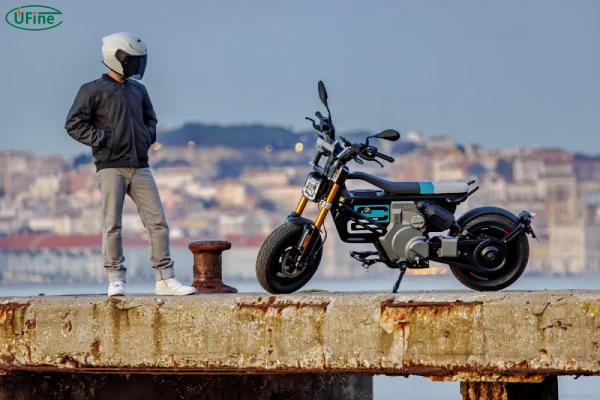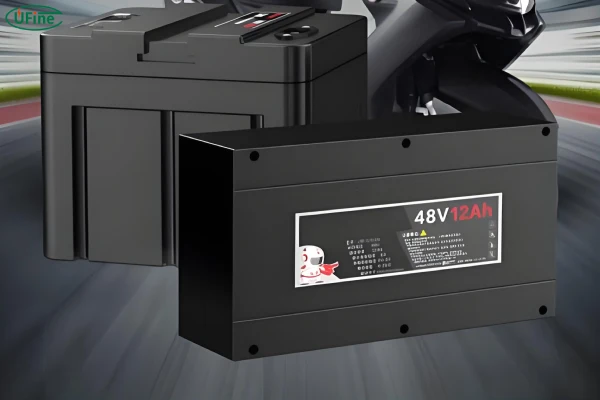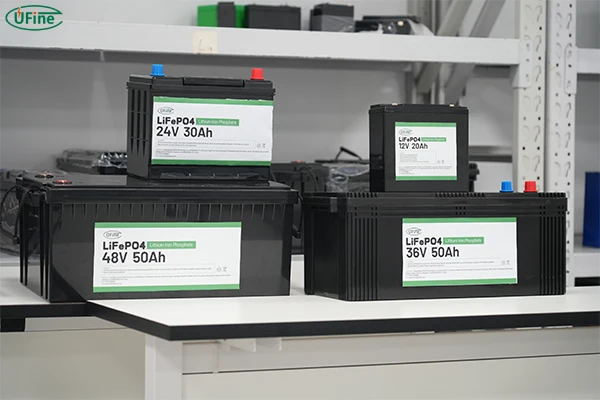Electric motorcycles are revolutionizing transportation, and at the core of this innovation lies the electric motorcycle battery. While the sleek design and quiet operation grab attention, it’s the battery that makes everything possible. A great battery is not just a power source; it’s the key to speed, range, and overall riding experience.
In this guide, we’ll explore the details of electric motorcycle batteries, from understanding their role in performance to selecting the best one for your needs. Whether you’re upgrading or just getting started, this deep dive will empower you to make informed decisions.
Part 1. How does the battery impact electric motorcycle performance?
The battery in an electric motorcycle is comparable to an engine in a traditional vehicle—it drives the performance. But how exactly does it affect the bike’s capabilities?
Speed and Acceleration
The battery’s ability to deliver power (measured in voltage and current) directly impacts how quickly the motorcycle accelerates and reaches its top speed. A high-voltage battery provides more power to the motor, resulting in faster acceleration. This is especially noticeable when riding on slopes or rough terrain.
Range and Riding Distance
The energy stored in the battery, measured in kilowatt-hours (kWh) or ampere-hours (Ah), determines how far you can ride on a single charge. Higher capacity means a longer range, which is critical for long-distance riders or commuters.
Consistency and Reliability
A high-quality battery maintains consistent power output, preventing sudden dips in performance. Cheap or poorly maintained batteries can cause the bike to feel sluggish or even shut down unexpectedly.
Heat Management and Durability
Batteries heat up during operation, and excessive heat can degrade performance over time. High-quality batteries are designed with better thermal management systems, ensuring they perform reliably under demanding conditions.
Part 2. Types of electric motorcycle batteries
There’s no universal battery for all electric motorcycles. Each type comes with its own advantages and disadvantages. Understanding these differences is critical for making the right choice.
A Comparative Analysis of LiFePO4 vs. Lead Acid
Lead-Acid Batteries
The earliest type of rechargeable battery, lead-acid is often found in older or budget motorcycles.
- Advantages:
- Affordable and easy to replace.
- Simple technology that’s been around for decades.
- Disadvantages:
- Very heavy, adding unnecessary weight to the bike.
- Limited capacity, meaning shorter range.
- Lifespan is short (1–3 years).
Lithium-Ion Batteries
The industry standard for modern electric motorcycles, lithium-ion batteries offer a powerful blend of performance and durability.
- Advantages:
- Lightweight and compact.
- High energy density allows for longer range.
- Longer lifespan, often exceeding 1000 cycles.
- Disadvantages:
- Expensive upfront cost.
- Susceptible to damage from overcharging or extreme temperatures.
Lithium Iron Phosphate (LiFePO4)
A safer variation of lithium-ion technology, these batteries are gaining popularity due to their stability.
- Advantages:
- Excellent safety record with low risk of overheating.
- Long lifespan, often exceeding 2000 cycles.
- Handles high temperatures better than standard lithium-ion.
- Disadvantages:
- Bulkier than lithium-ion.
- Slightly lower energy density.
Nickel-Metal Hydride (NiMH)
While less common today, NiMH batteries were once a contender in the electric vehicle market.
- Advantages:
- More environmentally friendly than lead-acid.
- Longer lifespan than lead-acid.
- Disadvantages:
- Heavy and less efficient than lithium-ion.
- Limited adoption in the motorcycle industry.
Part 3. Understanding electric motorcycle battery voltage
Voltage is one of the most important specs to consider when evaluating a battery. It determines how much power the battery can send to the motor at any given time. Common voltage options include:
- 48V: Suitable for smaller motorcycles or scooters. Provides adequate speed for short commutes.
- 60V: A middle-tier option for moderate performance and range.
- 72V: High-performance motorcycles use this voltage for faster speeds and longer rides.
Higher voltage systems are generally more efficient and provide better acceleration. However, they often require advanced controllers and are more expensive. Always check your motorcycle’s voltage requirements before upgrading your battery.
Part 4. Capacity and weight: the key to balance
Battery Capacity
Measured in ampere-hours (Ah) or kilowatt-hours (kWh), capacity determines how long your battery can power your bike. A battery with a capacity of 20Ah might last an hour at moderate speeds, while a 40Ah battery could double that time.
Capacity directly affects the range. If you’re commuting short distances, a smaller capacity might suffice. But for long-distance riders, investing in higher capacity is essential.
Battery Weight
Weight plays a significant role in motorcycle handling. Heavy batteries may provide more capacity but can make the bike feel sluggish and harder to maneuver. Lightweight batteries, like lithium-ion, offer the best of both worlds but often come at a premium price.
Part 5. Common battery sizes
Electric motorcycle batteries come in various sizes, designed to fit specific bike models. Common formats include:
- 18650 Cells: These cylindrical cells are widely used in lithium-ion packs and are known for their compact size and high energy density.
- Customized Packs: Many manufacturers create battery packs tailored to their motorcycles, ensuring a snug fit and optimized performance.
Before purchasing, check your motorcycle’s battery compartment dimensions to avoid compatibility issues.
Part 6. How long do electric motorcycle batteries last?
Battery life is measured in charge cycles. A charge cycle is one full charge and discharge. Here’s what you can expect:
- Lead-Acid: 300–500 cycles.
- Lithium-Ion: 800–1000 cycles.
- LiFePO4: 2000+ cycles.
Factors Affecting Lifespan
Several factors influence battery longevity, including:
- Charging Habits: Avoid overcharging or fully draining your battery.
- Temperature: Extreme heat or cold can degrade batteries faster.
- Usage: Frequent deep discharges reduce the number of available cycles.
To calculate lifespan, divide total cycles by your usage frequency. For example, if a battery has 1000 cycles and you charge it every day, it will last roughly 2.7 years.
Part 7. Price
The cost of a battery depends on its type, capacity, and brand. Here’s a rough breakdown:
- Lead-Acid: $100–$400.
- Lithium-Ion: $500–$1500.
- LiFePO4: $700–$2000.
Although lithium batteries cost more upfront, their longer lifespan and superior performance often make them the more economical choice over time.
Part 8. What to consider when buying an electric motorcycle battery?
Choosing the right battery isn’t just about price or brand. Consider these factors to make an informed decision:
- Type: Lithium-ion is ideal for most riders, but weigh the pros and cons of all options.
- Voltage: Ensure compatibility with your motorcycle’s motor.
- Capacity: Pick a battery that meets your range needs.
- Weight: A lighter battery improves handling and efficiency.
- Size: Check dimensions to avoid installation issues.
- Lifespan: Look for long-lasting batteries with high cycle counts.
- Price vs. Value: Balance cost with durability and performance.
- Warranty: Opt for a battery with a solid warranty and good customer support.
Part 9. Conclusion
Electric motorcycle batteries are the lifeblood of your ride. They determine how far you can go, how fast you can travel, and how smooth your experience will be. By understanding their role, types, and specifications, you can make a confident choice that suits your lifestyle and riding habits.
Related Tags:
More Articles

How to Choose the Best Floor Scrubber Battery for Commercial Cleaning?
Selecting the ideal floor scrubber battery ensures a long runtime, rapid charging, and minimal maintenance for efficient commercial cleaning operations.
Battery for Blower vs Battery for Leaf Vacuum: Which One Should You Choose?
Battery for blower vs leaf vacuum—learn the key differences in power, fit, and runtime to choose the right battery for your outdoor tool needs.
How to Choose the Right Battery for Blower?
Choosing the right blower battery? Consider voltage, capacity, chemistry & usage. This guide helps match the best battery for peak performance.
How to Choose the Best Insulated Battery Box for Lithium Batteries?
Choosing the Best Insulated Battery Box for Lithium Batteries? Discover key factors such as size, material, and safety for optimal protection and performance.
7 Critical Elements on a Lithium Battery Shipping Label
What must be on a lithium battery shipping label? Learn 7 key elements to ensure safety, legal compliance, and correct handling across all transport modes.






